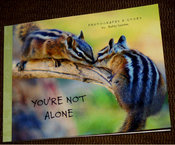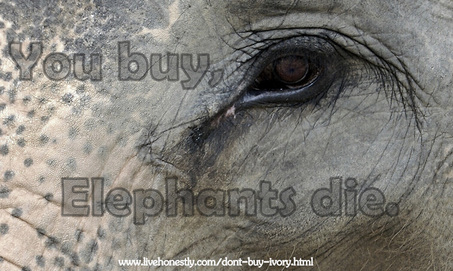|
In a world that is so war torn and ravaged by greed, it's heart warming to hear that some conflicts are finding friendly resolutions.  Photo: Contributor/IRIN "Living peacefully with elephants is possible," says Sereivathana TuyKOH KONG. 15 December 2010 (IRIN) - Sokha Seang, a 33-year-old rice farmer, recalls the night last spring when a herd of elephants trampled over his property. "They were hungry. I was angry, but I understand why they did it," he said. The pachyderms ate most of his food stock. In Cambodia, poor farmers like Seang cannot afford to lose crops; a third of the population lives below the national poverty line of US$0.75 a day, according to government statistics. They kill marauding elephants with guns, sharp bamboo sticks, or by leaving out poisoned food. Sometimes, the elephants retaliate by running over people. This time, Seang set aside his instinct to fight back, with the help of NGOs. "We need to live with them peacefully," said Seang, whose remote village of Prey Proseth lies in the southwest province of Koh Kong.  by Betsy Seeton - Bali Protecting livelihoods, preserving wildlife Conflicts between elephants and farmers are common across Asia, one factor that has caused the animal population to dwindle and farmers to lose their livelihoods. Experts such as Sereivathana Tuy, 40, are encouraging farmers to find ways to live peacefully with the elephants. Tuy is a Cambodia-based elephant specialist at Flora and Fauna International, a wildlife non-profit organization based in Cambridge, UK. He teaches farmers to alternate crops such as cucumbers and white radishes, which can be harvested several times a year. This gives elephants fewer chances to eat them. Villagers have also learned to ward off elephants by planting chilli peppers around their land, rather than maiming them with weapons, as elephants dislike the smell, Tuy said. For Tuy, both sides can preserve their ways of life. The villagers keep their harvest while the elephant population can also be conserved, he told IRIN in Koh Kong. In Cambodia, fewer than 500 elephants are thought to roam in the wild today. In 1995, there were an estimated 2,000 wild elephants. Building trust The clash between elephants and humans became a problem after the communist Khmer Rouge regime was ousted in 1979. In the next two decades, under-regulated development caused deforestation, forcing elephants to search for food and water on farmlands outside their traditional forests. Some Cambodians sought expensive elephant tails, tusks and the tips of their trunks - body parts that were believed to bring power - and displayed them in their houses to show their status. These practices led to widespread poaching, says Tuy. As a park ranger in Cambodia in the 1990s, Tuy developed a community-based model for ending human-elephant conflicts that revolves around building trust with farmers. Tuy's method begins with hiring teachers who teach children about elephants in four schools in remote areas. The children then pass the knowledge on to their parents, who are supposed to discuss it with the other villagers. Before 2005, elephant killings were often reported to the police, who would arrest the perpetrators, then jail or fine them more than $2,000. Under Cambodian laws, poachers or elephant killers may also be jailed for 10 years. Angry villagers said they knew of no other option to protect their land. The situation might be improving, however. Tuy estimates there have been between five and 10 elephant attacks on humans since 2003, and only one death since 2005 - a sign that farmers are using safer methods to drive away the elephants. Many methods are backed by empirical evidence. One study last year found that "community-based crop-guarding methods" - the sort of collective guarding using traditional tools that Tuy teaches to villagers - warded off elephants in about 90 percent of attempted raids around Way Kambas National Park, on the island of Sumatra, Indonesia. "It ties in with a growing realization that a lot of the top-down methods haven't worked especially well," Simon Hedges, Asian elephant coordinator at the New York-based Wildlife Conservation Society (WCS), told IRIN from London. "It's not really realistic for all communities across... Africa and Asia to expect that the government is going to deal with elephants for them," he added. contributor/ds/mw
0 Comments
Your comment will be posted after it is approved.
Leave a Reply. |
"Ask not what an animal can do for you; ask what you can do for an animal." Jasper
"The animals of the world exist for their own reasons. They were not made for humans any more than black people were made for white, or women created for men." ~Alice Walker The source of the quote is Walker's preface to Marjorie Spiegel's 1988 book, "The Dreaded Comparison" . Her next sentence was, "This is the gist of Ms. Spiegel's cogent, humane and astute argument, and it is sound." Archives
February 2015
"I was so moved by the intelligence, sense of fun and personalities of the animals I worked with on (the movie) Babe that by the end of the film I was a vegetarian." ~ James Cromwell Categories
All
|



















